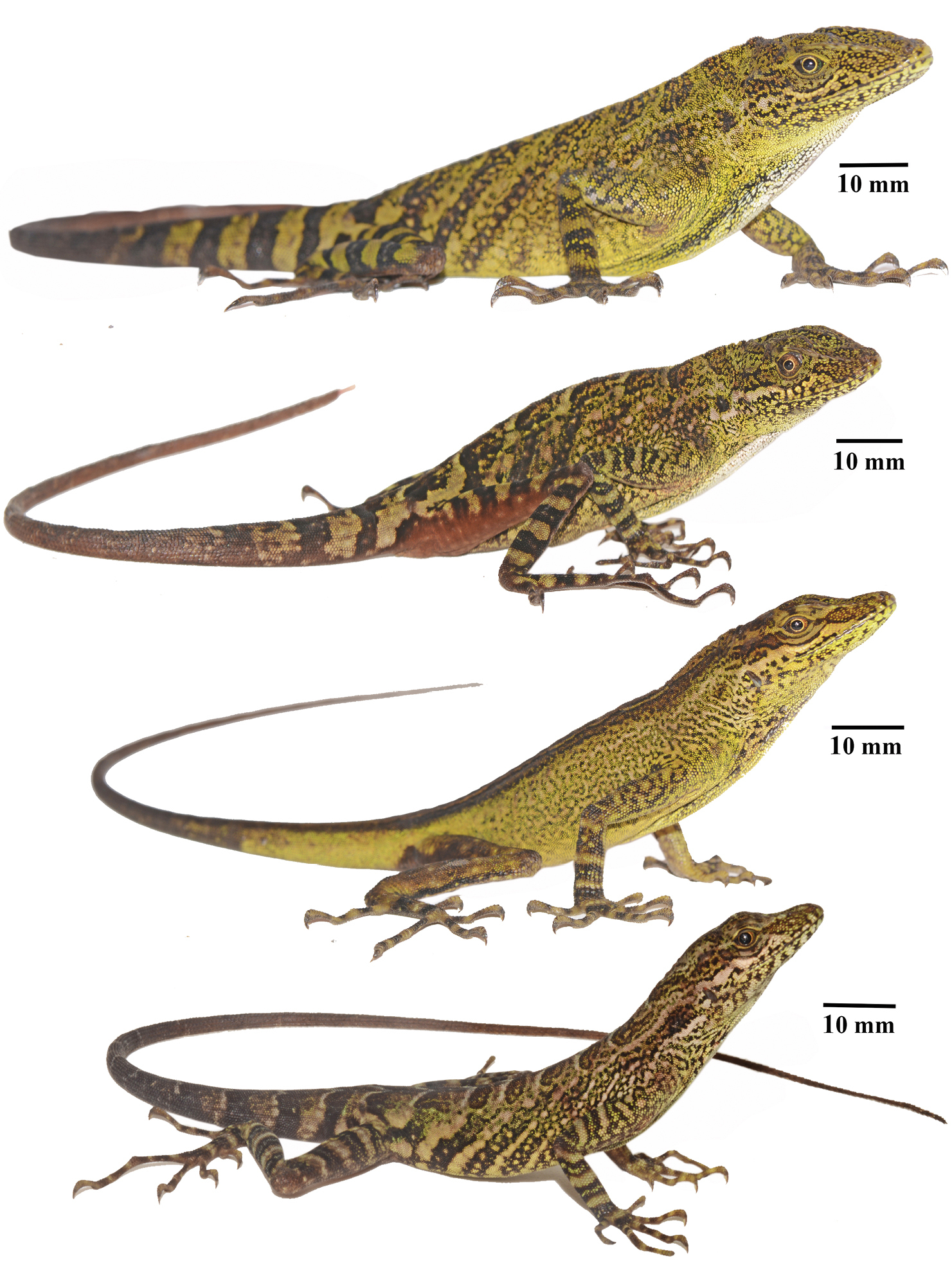Hey guys!
Hope you have all been OK. I’ve been working on some things, thinking of new anole sticker designs, WRITING. Been pretty productive I feel, and now I’m back, #DidYouAnole is back, the anoles… Have never left this anole website. But thank you for coming back for my posts!
Today’s anole is Anolis fraseri, the Hippie Anole.
This anole is a crown-giant that is native to low montane forests, riparian habitats and orchards in Ecuador and Colombia. The males get up to 109 mm (SVL) and the females, 116 mm.
As you can tell from the pictures, this anole’s colouring is mainly shades of green and olive with striping, and it may have blotches on its head and/or sides that are red or orange, even pink. Like many other anoles, it can change its colour to a dark brown. These colours kind of make the anole look tie-dyed to me, which I think is where its common name comes from (let me know if that’s not the case).
Some individuals may be mistaken for other anoles that occupy the same habitat with similar patterning, but can be told apart by the dewlap colour.
The Hippie Anole is a sit-and-wait predator, relying on crypsis.
According to The Amphibians and Reptiles of Mindo, this anole is widely distributed in the part of the forest with the vegetation cover that it prefers, but is only found in these areas, making it uncommon and possibly endangered.
A note on honourific names (like the name of this anole):
This anole is also referred to as Fraser’s Anole, however regarding recent discussion about scientific racism and honourific names, I will refer to it by its other name Hippie Anole. When I just started out as a scientist, the history of naming organisms after important figures in science seemed liked a good practice, something I desperately wanted myself, until I learnt more. While we cannot deny their valid contributions to our respective fields, we also cannot overlook their ideas regarding race. As a Black scientist, it is an uncomfortable environment where the people who did not think I was equal to them or even capable of being regarded as a human being are constantly lauded, and I am to study animals that are named after them. A constant reminder. I cannot pick and choose their legacy, I don’t have that privilege as a Black woman, it all stays with me. Our study subjects are magnificent animals, and I would like them to be just that, free from marred legacies.





























